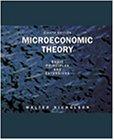16.3 Suppose an economy produces only two goods, X and Y. Production of good X is given...
Question:
16.3 Suppose an economy produces only two goods, X and Y. Production of good X is given by where Kx and Lx are the inputs of capital and labor devoted to X production. The production function for good Fis given by V— JS>-l/3 T 2/3 /
— iv y Ajy j where KYa.nd LFare the inputs of capital and labor devoted to F production. The supply of capital is fixed at 100 units and the supply of labor is fixed at 200 units. Hence, if both units are fully employed, KX+KY=KT= 100 Lx+ LY= LT= 200.
Using this information, complete the following questions.
a. Show how the capital-labor ratio in X production (Kx/Lx = kx) must be related to the capital-labor ratio in F production (KY/LY = kY) if production is to be efficient.
b. Show that the capital-labor ratios for the two goods are constrained by KT 100 1 axkx+(l-ax)kY=-= — = -,
where ax is the share of total labor devoted to X production [that is, ax = Lx/Lr = Lx/
(Lx+Ly)].
c. Use the information from parts
(a) and
(b) to compute the efficient capital-labor ratio for good Xfor any value of ax between 0 and 1.
d. Graph the Edgeworth production box for this economy and use the information from part
(c) to develop a rough sketch of the production contract curve.
e. Which good, X or Y, is capital intensive in this economy? Explain why the production possibility curve for the economy is concave.
f. Calculate the mathematical form of the production possibility frontier for this economy (this calculation may be rather tedious!). Show that, as expected, this is a concave function.
Step by Step Answer:

Microeconomic Theory Basic Principles And Extensions
ISBN: 9780030335938
8th Edition
Authors: Walter Nicholson






